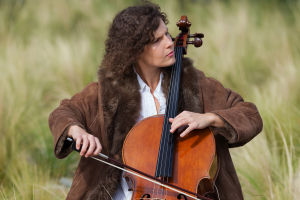Exercise is necessary for both young and old, but especially the elderly, taking some time every day to exercise can have many benefits, such as:
1. Delay aging People who do not regularly participate in physical exercise reach maximum muscle strength in their twenties to twenty-five years, and the loss of muscle strength will accelerate after the age of 60. Another important manifestation of decreased muscle strength is slower movement and reduced walking speed. But those who regularly strength-train the situation appear later than their peers.
2. Increase bone density Many middle-aged and elderly people begin to experience osteoporosis as they age. The easiest and most effective way is to do more strength training to continuously stimulate and strengthen bones.
3. Long-term participation in exercise can increase heart function. The elasticity of blood vessels is improved, the blood circulation of the whole body is promoted, the blood flow of the brain is increased, and the occurrence of cerebrovascular diseases is prevented.
On the contrary, if the elderly often sit and do not exercise, the following adverse effects will occur on the body:
1. Disuse muscle atrophy:
All organs of the human body follow the principle of use and disuse. If you do not exercise for a long time, the muscles will not be fully stimulated, and gradually small muscles and poor strength will appear, which will lead to disuse atrophy;
2. Cardiopulmonary function decline:
If you do not exercise for a long time, the cardiopulmonary function will not be effectively exercised, and the heart and lungs will not be adequately stimulated, and the cardiopulmonary function will become worse and worse, resulting in the phenomenon of shortness of breath after light physical activity;
3. Joint stiffness:
Long-term inactivity, the flexibility and coordination of the body will be greatly reduced, and the joints will also be reduced in ligament strength due to long-term inactivity, resulting in joint stiffness.
The 2020 World Health Organization (WHO) Guidelines on Physical Activity and Sedentary Behaviors recommend for older people aged 65 and older: All older adults engage in regular physical activity, however, older adults should do so to the extent that their abilities allow Exercise and adjust the intensity of your activity according to your fitness level, and you should consult your doctor before starting any new exercise program.
Older adults should engage in at least 150 to 300 minutes of moderate-intensity aerobic exercise, or at least 75 to 150 minutes of vigorous-intensity aerobic exercise per week. Greater health benefits.
Older adults should also engage in moderate-intensity or higher-intensity resistance exercise that works all major muscle groups, 2 or more days per week, for additional health benefits.
During weekly physical activity, older adults should engage in a variety of physical activities that focus on moderate- or higher-intensity functional balance and strength training at least 3 days per week to enhance balance and prevent falls.
Dancing is a sport for the elderly that can exercise the muscles of the whole body, and can also make new friends and expand their social circles during the dance.
1. Promote digestion
Dancing can enhance the secretory function of the digestive glands, promote the regular peristalsis of the gastrointestinal tract, increase appetite, and have a good effect on the prevention and treatment of hypertension, diabetes, obesity, and habitual constipation.
2. Improve coordination ability
Dance movements need to mobilize all the joints of the whole body to participate, and the coordination requirements of the human body are relatively high. The elderly insist on dancing moderately, which helps to improve the coordination ability of the whole body and helps the elderly not easily fall.
3. Relieve muscle tension
Dance movement is the best tranquilizer in the world, because a moderate amount of dancing can ease the tension of nerves and muscles, so as to achieve the effect of relaxation. Dancing can enhance muscle strength, make joints flexible, and promote human blood circulation and metabolism. This exercise can relieve neuromuscular tension.


